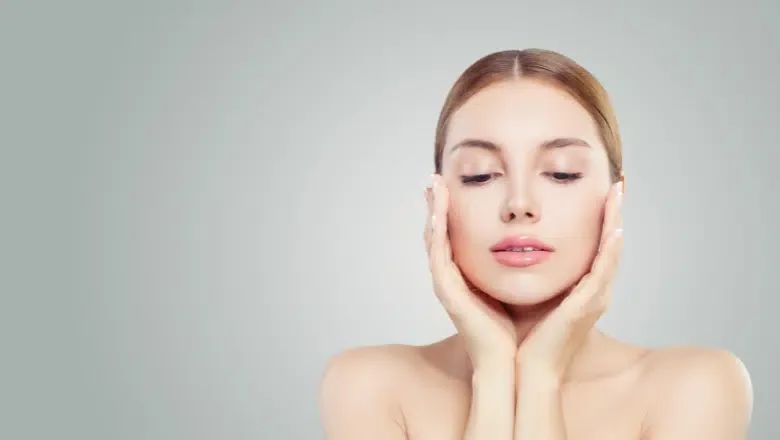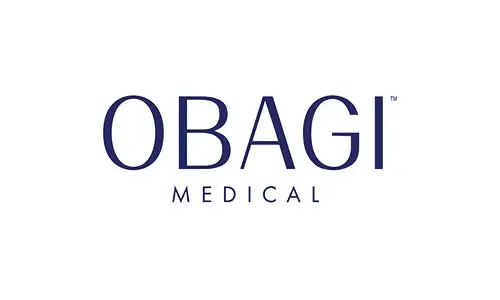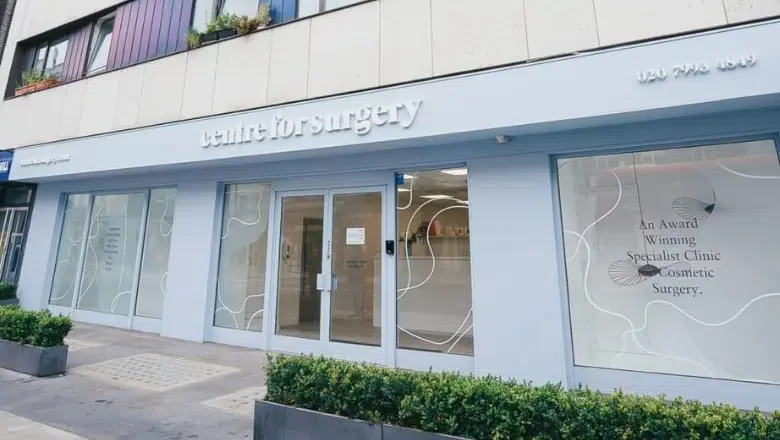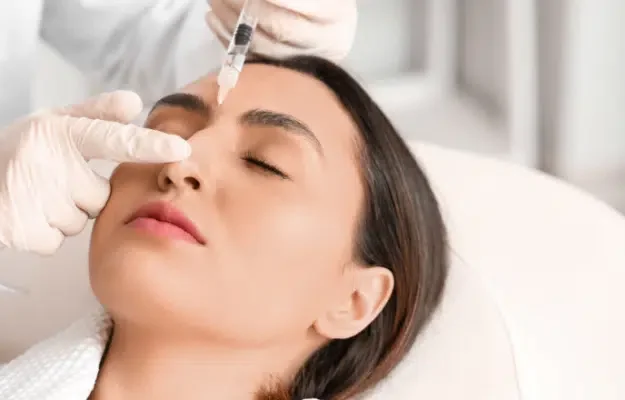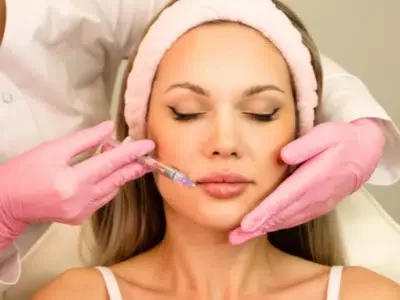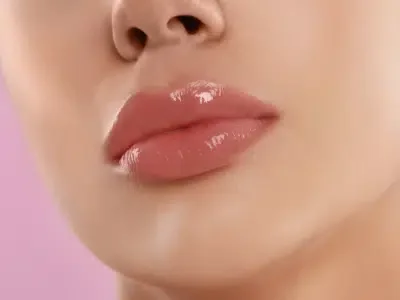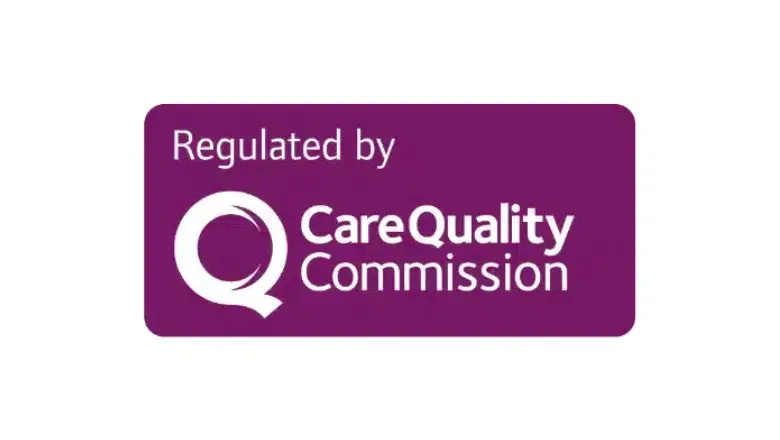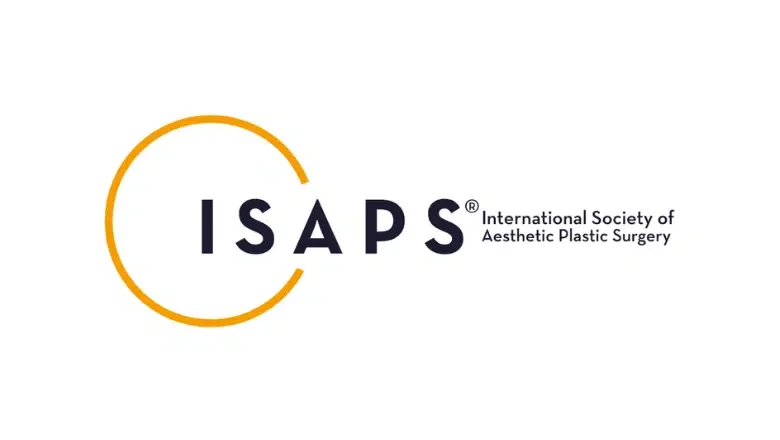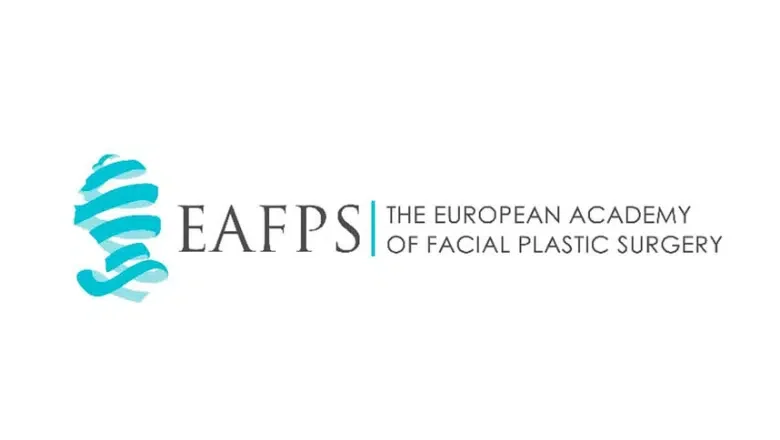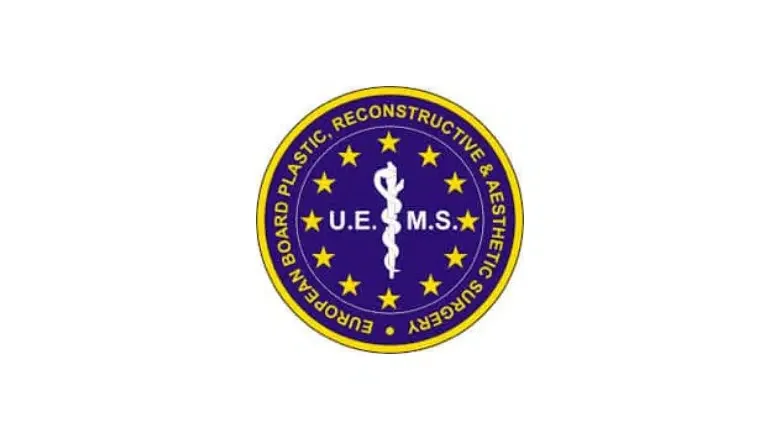Anti-ageing treatments are a popular option at the Centre for Surgery. Ageing of the skin manifests itself in several ways and is due to both functional and environmental factors. Facial skin laxity and sagging, fine lines and wrinkles, hyperpigmentation, facial thread veins, coarse skin texture, and uneven skin tone are all recognised features of the ageing process in both men and women. There are two main ways in which people can age – intrinsic factors and extrinsic factors. Intrinsic ageing refers to signs of ageing due to underlying hereditary factors and ageing, which occurs naturally with time. As we age, we naturally lose both fat and muscle mass from the face, along with a gradual reduction in the underlying bone volume. This causes the skin to lose its underlying structural support and undergo sagging. Changes also occur with the natural turnover of skin cells, which gradually slow down with time, which means newer skin cells take longer to form. Older skin cells take longer to be shed from the body, leading to an overall net accumulation of older skin. Other intrinsic factors include impairment in the production of new collagen and elastin as well the skin components responsible for providing natural hydration and turgor known as glycosaminoglycans or GAGs. A reduction in GAG production leads to drier and more brittle skin.
The main factors are extrinsic factors, including environmental influences and an individual’s lifestyle choices, that can result in a more pronounced ageing process. Up to 90% of the recognised features of ageing are due to extrinsic factors. However, many of these extrinsic factors can be controlled more effectively, helping to slow the ageing process. Certain lifestyle habits exert a disproportionate influence on the ageing process, and these include a poor diet, smoking and excessive alcohol consumption. The biggest extrinsic factor contributing the most to accelerated ageing is chronic long-term exposure to strong sunlight, which can be implicated in up to 90% of cases.
Sunlight contains UV radiation, and excessive exposure to UV radiation contributes to a variety of adverse effects on the skin. Collagen and elastin breakdown is facilitated by the production of enzymes referred to as matrix metalloproteinases, also known as MMPs. This leads to the formation of wrinkles and a reduction in skin laxity. MMPs also contribute to reducing skin hydration due to the breakdown of GAGs, as referred to above. As collagen production is impaired, this leads to a disruption in the internal structure of collagen and its precise arrangement in the skin, leading to wrinkles. Melanocytes are the main pigment-producing cells in the skin. However, their function is disrupted by excessive sunlight exposure, leading to haphazard production of melanin, leading to dark blotchy patches. This can lead to the formation of age spots, uneven skin texture, and discolouration in skin tone, also known as dyschromia. The fine blood vessels beneath the skin, known as capillaries, are responsible for transporting nutrients to the skin. Sunlight can disrupt the integrity of these fine blood vessels, resulting in facial thread veins and, in some cases, excessive redness of the face, also known as rosacea.
Treatment options for anti-ageing
The fundamentals of an effective anti-ageing treatment regimen start with protecting your skin from excessive sunlight and adopting healthy lifestyle habits with a long-term commitment. Centre for Surgery provides medical-grade skin care products proven to work and can only be prescribed by a specialist dermatologist experienced in the full range of anti-ageing treatments. These anti-ageing treatments achieve results far over your usual over-the-counter retail products, which lack effectiveness. The prescription-only Obagi Nu-Derm system by Obagi Medical is the gold standard in skin care treatment. At its heart, Obagi-Nu Derm is a combination of prescription-grade skincare products. This combination allows deep penetration of the active agents that are not achievable with other products. The positive skin changes occur at the deepest cellular level as opposed to retail products, which barely attain a superficial effect. For milder skin concerns, there is also the option of swapping out the retinoid with milder retinol, which still carries great advantages in collagen regeneration to reduce the visible signs of ageing. Before starting any anti-ageing treatments, our specialist dermatologists will carefully and holistically assess you and determine the best treatment based on your skin type, preferences and lifestyle.
Benefits of Obagi Nu-Derm
- Increased production of new collagen and elastin by fibroblasts leads to an increase in skin quality.
- Increase in tissue hydration through an increase in GAG production
- Improvement in skin tone through reducing excessive production of melanin and a more even skin colour
- An increase in cell renewal leads to an increase in newer skin cells and simultaneously promotes the removal of older skin cells through exfoliation
- Improved blood flow to the skin from stimulation of new development of superficial blood vessels
Anti Ageing Treatments at Centre for Surgery
Centre for Surgery specialises in the full range of anti-ageing treatments, which our dermatologists deploy in unique combinations to treat all types of skin concerns and premature ageing effectively. Treatments include microneedling, chemical peels, laser resurfacing, and more invasive treatments like anti-wrinkle injections and dermal fillers. The Obagi Nu-Derm perfectly complements all our in-clinic treatments, which can lead to an increase of up to 50% in treatment effectiveness. The key to many treatments is to remove dead skin cells and promote the development of newer and more youthful skin, which contains higher levels of collagen and elastin for increased resilience and tone. When the skin can more effectively exfoliate itself with medical-grade treatments, this helps enhance the effectiveness of over-the-counter products such as retinol taken at home.
Fotona 4D laser
Non-invasive laser rejuvenation using Fotona 4D dual wavelength laser is a very powerful and completely non-invasive treatment that can reduce hyperpigmentation and treat facial redness and thread veins. This treatment can treat both brown age spots and areas of redness in addition to achieving a significant degree of skin tightening when a course of treatments is undertaken. Fotona 4D achieves the best results when combined with the Obagi Nu-Derm system. As with all laser treatments, taking adequate protective measures against excessive sunlight exposure is extremely important, including wearing regular sunscreen.
Morpheus8 skin tightening
Morpheus8 is a fractional radiofrequency microneedling treatment for effectively treating lines and wrinkles, uneven tone and texture and skin tightening without the need for more invasive surgical procedures like a facelift. The Morpheus8 procedure achieves a fresher, younger and healthier appearance through tightening and lifting tissue in the neck, under the chin, jawline and brow area, and tightening the skin on the décolleté. Morpheus8 can be used as a pre-surgical treatment or replacement for facelift and neck lift surgery and can even be used to maintain surgery results after a facelift.
What to expect
Centre for Surgery is committed to following the latest national guidance and strict medical protocols in the provision of anti-ageing treatments. All laser treatments are only carried out by trained aesthetic practitioners and dermatologists for safer outcomes.
A dedicated patient coordinator will look after you to act as your point of contact throughout your journey with us. Once we have a clear idea of your presenting concern, we will book you in to see an aesthetic practitioner best placed to assess and treat you. The full range of treatment options will be explained.
What happens at the consultation for anti-ageing treatment?
The specialist will take a comprehensive approach to assessing you by taking a full history and examination:
- Treatment options based on your facial structure and the possible outcomes that can be achieved
- In-depth discussion of the different non-surgical facial rejuvenation options, what potential treatment outcome can be expected with each option, and whether any downtime is to be expected
- Assessing your physical and mental health to make sure that ageing treatments are right for you
- Answer any questions that you may have about the different treatment options.
If it is determined that anti-ageing treatments are appropriate, a written treatment plan will be prepared and presented to you so you can decide whether to proceed. Some treatments, such as facial injectables, can be performed in the same visit, whereas others, such as laser resurfacing, may require skin preparation that may take up to six weeks before the actual treatment can take place.
Your practitioner will ask you to return for a follow-up visit two weeks later for a review, which may include a free top-up or ‘tweakment’ if you have facial injectables.
Patient journey quick overview:
- Visit us at our Baker Street clinic in Marylebone for a consultation with a fully trained and qualified aesthetic practitioner or dermatologist
- At the consultation, decide on the best treatment option based on your practitioner’s expert advice. You can choose to have treatment at the same visit if you prefer certain treatments.
- Return in 2 weeks for your follow-up visit for a check-up and repeat treatment or free top-up if appropriate if you had facial injectables.
Anti Ageing Treatments FAQs
How do I prevent the development of lines and wrinkles?
The ageing process affects individuals to different extents depending on their risk factors. However, there are several practical measures we can take to slow down the process:
– When in the sun, wear sunscreen of SPF 30 and higher and try to minimise direct sun exposure as much as possible
– Wear an appropriate hat which has a wide brim and wear sunglasses with filters for UVA and UVB
– Wear protective clothing which covers the arms and legs
– Apply high-quality skincare products which contain vitamin A and other anti-ageing ingredients
– Refrain from smoking
– Have maintenance anti-ageing treatments which promote the production of collagen and elastin, such as Fotona 4D
Anti-wrinkle injections, also known as neuromodulators, are ideal as a complementary treatment alongside the above practical steps to slow down the development of early-onset lines and wrinkles and treat those that have already begun to form.
How do Obagi products differ from skin care products found in retail stores?
Obagi skin care products work differently from retail skin products to target the cellular level to address the functioning of the skin cells. Obagi products are doctor-prescribed skin care products as they contain prescription-strength ingredients. Retail stores can only stock non-prescription grade skin care lines known as cosmeceuticals. Cosmeceuticals lack the depth of penetration compared with Obagi products and cannot target skin cells at the cellular level. The treatment effects are, therefore, less dramatic.
Which Obagi products should be used?
The Obagi family of products complements each other to revitalise your skin with impressive results. Scientifically formulated Obagi ingredients maintain the skin’s pH, enabling deeper penetration into the skin layers and robust treatment results. Follow the treatment protocol as your practitioner advises.
Where are Obagi medical products applied?
Obagi skin care products are developed for exclusive use on the face, and application should be avoided around the eyes as the skin in the eye region is very thin. Several Obagi products target the area around the eyes. The use of Obagi on the neck should also be treated with caution, as the neck skin is more delicate than facial skin. Your dermatologist will advise you on the most appropriate areas for the application of Obagi products.
Can I use Obagi skincare products if I am pregnant?
Our dermatologists do not recommend using Obagi prescription-grade skin products whilst pregnant, as the Obagi Nu-Derm system contains prescription-grade agents that are not considered safe to use during pregnancy. A range of non-prescription Obagi products are safe to use during pregnancy.
Can I buy Obagi skin care products online?
The Obagi Nu-Derm system is a prescription-only product and must be prescribed by a dermatologist after a face-to-face consultation. It is often not possible to assess whether products purchased online are genuine or not, and for this reason, we would advise against buying prescription products online without a doctor consultation and prescription.
What results can I expect to achieve following treatment with Obagi products?
The Obagi Nu-Derm system is designed to reduce hyperpigmentation and increase cell turnover to form new healthy skin cells. Patients can expect to experience healthier, smoother and more youthful skin with a more even complexion. Fine lines and wrinkles are also improved. The results of the Obagi Nu-Derm system can be improved by applying an in-clinic Obagi Blue Radiance Peel to resurface the epidermal skin layer gently. Obagi skin peels take up to 6 weeks to give results that result in brighter and more refreshed skin and work in a complementary manner to the Obagi Nu-Derm system.
